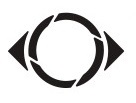Keratoconus management must take place with a corneal specialist or contact lens specialist who is trained and experienced in handling patients with keratoconus. Management requires a greater understanding of keratoconus and a history of treating similar patients diagnosed with keratoconus. This keratoconus management often requires cooperation between an ophthalmologist and an optometrist as each provides their specialist knowledge to provide the best possible care.
Keratoconus management can vary depending upon the level of progression of the disease. Mild cases of keratoconus can often achieve good vision with eyeglasses or soft contact lenses. In these cases keratoconus management is limited to observing the progression and providing good vision. As the disease progresses, the cornea thins and changes shape. At some point glasses and soft contact lenses will no longer provide the best possible vision.
The next step of keratoconus management is generally prescribing rigid gas permeable lenses. The firm material of hard contact lenses can maintain the spherical shape of the eye and allow for more focused vision. Fitting hard contact lenses for keratoconus patients requires a skilled practitioner. The fit can require more visits to achieve clear comfortable vision.
Some people with keratoconus can’t tolerate a rigid contact lens. They can be uncomfortable especially for people with advancing keratoconus. In many cases, contact lenses can no longer provide comfortable and acceptable vision.
A new method of keratoconus management is corneal inserts. Intacs corneal rings had previously been FDA approved for low amounts of myopia but received FDA approval in August 2004 to be correct or reduce nearsightedness and astigmatism in keratoconus patients who can no longer obtain functional vision with contact lenses or eyeglasses. The procedure involves placing the inserts with the corneal stroma in the periphery of the cornea. The result is a flatter cornea and clearer vision.
Studies show that Intacs generally improve a patient’s best corrected vision. Intacs are removable and exchangeable and the procedure takes only about 10 minutes. In fact, Intacs can allow a patient with keratoconus to defer or even avoid a corneal transplant. If necessary, Intacs do not preclude having a corneal transplant later if necessary. Potential risks that a patient with keratoconus must consider are infection, glare and halos, and foreign body sensation. Many of these risks are already experienced by a patient with keratoconus prior to any treatment, but it is important to discuss the procedure with a surgeon to make sure you are a good candidate.
Another new method for keratoconus management is known as Corneal Collagen Crosslinking with Riboflavin (Corneal Collagen Crosslinking with Riboflavin). This method works by increasing collagen crosslinking within the cornea. This treatment can be combined with Intacs to provide a combined effect and provide greater stability than one treatment alone.

